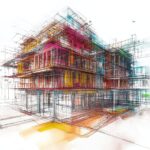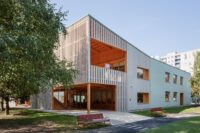- Home
- Articles
- Architectural Portfolio
- Architectral Presentation
- Inspirational Stories
- Architecture News
- Visualization
- BIM Industry
- Facade Design
- Parametric Design
- Career
- Landscape Architecture
- Construction
- Artificial Intelligence
- Sketching
- Design Softwares
- Diagrams
- Writing
- Architectural Tips
- Sustainability
- Courses
- Concept
- Technology
- History & Heritage
- Future of Architecture
- Guides & How-To
- Art & Culture
- Projects
- Interior Design
- Competitions
- Jobs
- Store
- Tools
- More
- Home
- Articles
- Architectural Portfolio
- Architectral Presentation
- Inspirational Stories
- Architecture News
- Visualization
- BIM Industry
- Facade Design
- Parametric Design
- Career
- Landscape Architecture
- Construction
- Artificial Intelligence
- Sketching
- Design Softwares
- Diagrams
- Writing
- Architectural Tips
- Sustainability
- Courses
- Concept
- Technology
- History & Heritage
- Future of Architecture
- Guides & How-To
- Art & Culture
- Projects
- Interior Design
- Competitions
- Jobs
- Store
- Tools
- More
Transforming Architecture with AI: Revolutionizing Design, Sustainability, and Construction
Explore how AI is revolutionizing architecture by enhancing creativity, efficiency, and sustainability. From generative design to automation and smart construction, discover the transformative impact and challenges of merging AI with traditional practices, reshaping how we design and interact with our environments for a smarter, sustainable future.

Architecture is experiencing a revolution, and it’s driven by artificial intelligence. What once seemed like a futuristic concept is now reshaping the way we design, build, and experience spaces. AI is no longer just a tool; it’s becoming an essential collaborator in crafting innovative and efficient architectural solutions.
From generating complex designs in minutes to optimizing sustainability and cost, AI is pushing the boundaries of what’s possible. It’s helping us rethink traditional processes and unlock creative potential we never thought achievable. As we embrace this transformation, we’re not just building structures—we’re shaping the future of how we live and interact with our environments.

Table of Contents
ToggleUnderstanding AI In Architecture
AI in architecture integrates machine learning, data processing, and automation to enhance design efficiency and precision. It analyzes vast data sets, including environmental factors, building codes, and user preferences, to generate optimized solutions that meet specific project requirements.
Machine learning models help identify patterns in architectural designs, enabling iterative improvements. For instance, they assess energy usage to propose sustainable materials or layouts. AI tools, such as parametric design software, allow architects to explore complex geometries quickly.
Generative design algorithms assist in creating multiple design variations based on defined parameters. By processing constraints like space, lighting, and aesthetics, they produce innovative layouts. Examples include Autodesk’s generative tools used in office or residential planning.
Automation streamlines repetitive tasks, reducing both errors and time spent. Tasks such as drafting, documentation, and cost estimation become faster and more accurate, allowing architects to focus on creativity and strategy.
Innovations In Transforming Architecture With AI
AI is driving innovation in architecture through advanced generative design, automation in construction, and sustainable solutions. It reshapes workflows, optimizes designs, and increases efficiency.

Generative Design Techniques
Generative design leverages AI to create optimized designs by analyzing input constraints like spatial dimensions, material usage, and environmental impact. Algorithms generate multiple iterations, allowing architects to select solutions that meet aesthetic and functional needs. For instance, AI-powered tools propose structurally sound yet creative geometries faster than manual processes. In complex projects like urban planning, generative design evaluates factors such as sunlight exposure and pedestrian traffic, offering improvements tailored to the environment. This approach enhances creativity while optimizing resources.
Automating Construction Processes
AI automation reduces manual effort in construction by streamlining repetitive tasks. Robots equipped with machine learning capabilities perform functions like bricklaying, 3D printing, and painting with precision. Automated scheduling tools analyze project timelines, ensuring resource allocation and task coordination stay on track. Drones are deployed for site inspections, delivering accurate assessments of progress and minimizing safety risks. For prefabricated elements, AI-assisted robotics improve assembly accuracy, cutting time and costs. These advancements enhance quality control and project efficiency.
Enhancing Sustainability In Designs
AI integrates sustainability into architectural planning by analyzing energy patterns, material efficiency, and environmental data. Machine learning models recommend eco-friendly materials suited to the client’s goals and climate conditions. Tools assess energy consumption during early design stages, enabling real-time adjustments for greener outcomes. For example, AI predicts thermal insulation levels using building orientation and local weather data. It also optimizes HVAC systems by simulating energy flows. These innovations help create designs that balance sustainability with functionality.
Benefits Of Using AI In Architecture
AI introduces significant advantages to architectural processes, reshaping efficiency, innovation, and cost management. It enhances both the quality and functionality of designs while supporting sustainability.

Improved Efficiency And Precision
AI optimizes workflows by automating repetitive tasks and reducing human error. Tools like machine learning algorithms process large data sets, including zoning regulations and environmental factors, to generate compliant and precise designs. Drafting, cost estimation, and material selection benefit from automation, enhancing project timelines. For example, parametric design software enables accurate structural analysis, minimizing errors during construction.
Cost-Effective Solutions
AI-driven tools identify cost-saving opportunities in the early project phases. Algorithms analyze budgets, propose economical alternatives, and optimize resource usage. Generative design ensures efficient utilization of materials, cutting unnecessary expenses. For instance, AI can recommend prefabrication techniques to reduce waste and labor costs, making projects more affordable without compromising quality.
Enhanced Creativity And Design Diversity
AI expands creative possibilities by generating diverse design iterations based on defined parameters. Generative design algorithms explore complex geometries, inspiring innovative architectural solutions. By analyzing user preferences, AI helps tailor buildings to specific functional and aesthetic needs. For example, architects can use AI to blend cultural influences into designs, producing unique structures that resonate with their surroundings.
Challenges Of Integrating AI In Architecture
Integrating AI in architecture presents several challenges despite its transformative potential. These challenges span ethical concerns, privacy issues, and technological constraints.

Ethical And Privacy Concerns
AI adoption in architecture raises ethical issues related to decision-making and data usage. Machine learning models often rely on vast datasets, which can embed biases and lead to inequitable design outcomes. For instance, an AI model trained on biased historical data might unintentionally perpetuate discriminatory design practices. Transparency in AI decision-making is critical yet often limited, making it hard to audit design choices effectively.
Privacy concerns arise from the extensive use of personal and environmental data in AI-driven architectural planning. Data collection for user preferences, occupancy trends, and environmental assessments risks exposing sensitive information if not securely controlled. Designing frameworks to protect this data while enabling its efficient use is an ongoing challenge.
Technological Limitations
AI applications in architecture often encounter limitations due to hardware, software, and dataset deficiencies. Most generative AI tools require high computational power, which can hinder accessibility for smaller firms or individual practitioners. Additionally, current software solutions might lack the flexibility to adapt to unique parameters of complex architectural projects, limiting AI’s practical utility.
Datasets are often incomplete or inconsistent, affecting the accuracy of AI-driven predictions and designs. For example, data gaps in environmental or material properties can result in suboptimal suggestions, undermining the reliability of AI recommendations. Continuous development of robust datasets tailored for architecture is essential to overcome these challenges.
The Future Of Architecture With AI
AI is reshaping architectural design, construction, and urban development by pushing boundaries and redefining traditional methodologies. It drives innovation in material science, automation, and personalized spaces, meeting future demands for efficiency, sustainability, and adaptability.

Personalized and Adaptive Designs
AI facilitates personalized architectural solutions by analyzing user behaviors, cultural factors, and functional needs. Through advanced algorithms, we can create spaces tailored to occupant lifestyles, like adaptive living environments that optimize energy usage, enhance comfort, and adjust to real-time conditions.
Sustainable Urban Planning
AI promotes sustainability in future urban development. Using advanced simulations, we can integrate green spaces, analyze energy flows, and minimize environmental impact. Tools such as AI-based resource mapping and predictive analytics allow urban planners to design efficient, eco-friendly smart cities.
Integration of Robotics in Construction
AI-driven robotics is revolutionizing construction, paving the way for autonomous machinery capable of assembling structures with precision. Robotic systems like AI-powered bricklaying robots expedite complex tasks, reduce material waste, and address labor shortages, ultimately reshaping future construction sites.
AI-Infused Collaboration Platforms
AI fosters collaboration among architects, engineers, and stakeholders through cloud-based platforms. These systems use machine learning to propose solutions, evaluate trade-offs, and streamline workflows, enhancing coordination and eliminating silos in complex projects.
Predictive Design Evolution
With evolving AI technologies, predictive modeling will refine architectural design processes. By forecasting environmental changes, demographic trends, and building performance, AI ensures designs align with future requirements, reducing long-term risks and costs.
Conclusion
AI is redefining architecture by merging computational precision with human creativity. It allows us to explore complex designs, optimize costs, and enhance sustainability through advanced tools like generative design algorithms and parametric software. Automation streamlines repetitive tasks, enabling a sharp focus on innovation and strategic problem-solving.
Adopting AI-driven methodologies improves efficiency and accuracy while unlocking new creative dimensions. It equips us to tackle challenges in urban planning, personalized spaces, and sustainable construction. However, addressing ethical concerns, privacy risks, and technological limitations is vital for responsible integration.
The transformative potential of AI reshapes how we design, build, and interact with our environments. By leveraging its capabilities, we can create adaptive, efficient, and eco-friendly architectural solutions that meet the demands of the future.
- AI and sustainability in architecture
- AI in architectural design
- AI in Architecture
- AI in building construction
- AI in construction technology
- AI in urban planning
- AI-driven design
- architectural automation
- artificial intelligence in construction
- future of architecture and AI
- Innovation in Architecture
- Revolutionizing Architectural Design
- Smart Building Design
- sustainable architecture with AI
- transforming architecture with AI
Submit your architectural projects
Follow these steps for submission your project. Submission FormLatest Posts
Veo 3 for Architecture: Free Prompts & How to Master Visual Design Videos
Veo 3 introduces AI-powered video generation for architecture, allowing designers to present...
Midjourney Video Update: A New Era for AI Architecture & Landscape Design
Midjourney’s new video feature introduces AI-powered animation for architectural and landscape renders,...
Google Nano Banana and Architecture: What This New Image Generator Means for Designers
Nano Banana is a new benchmark for testing how well AI models...
The Ethics of AI in Architecture
Ethics of AI in architecture, clarified: bias audits, human-in-the-loop guardrails, IP and...












Leave a comment